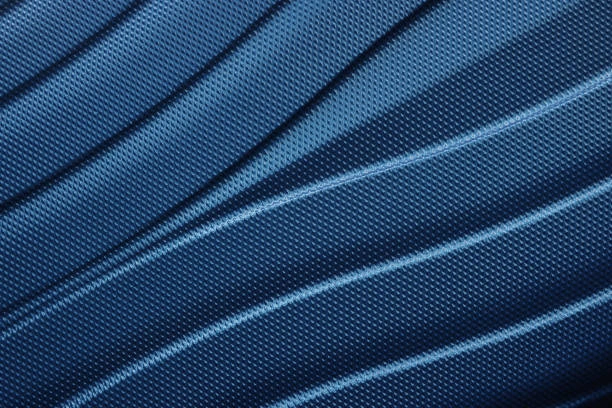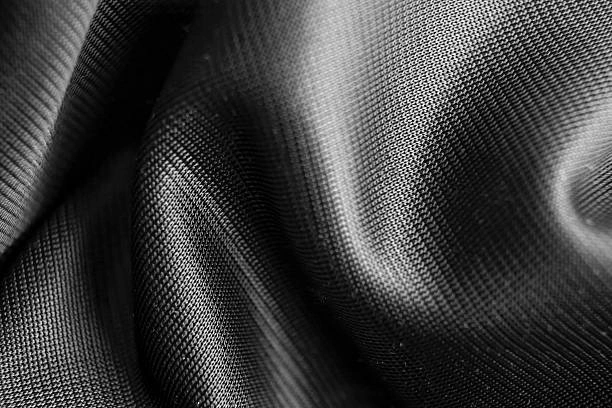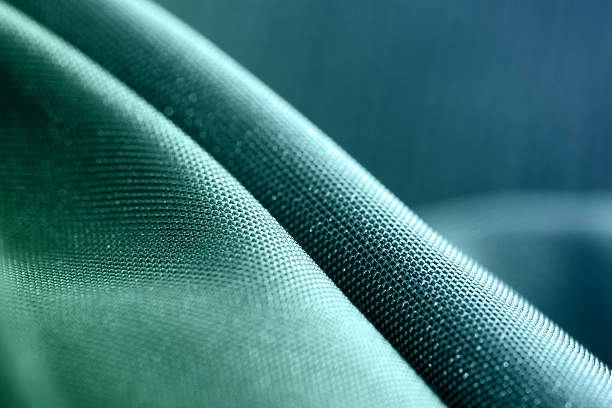As one of the world’s most well-known synthetic fibers, nylon is widely used in clothing, outdoor equipment, home textiles, and other fields due to its high strength, good elasticity, quick drying and wear resistance. From the breathable mesh of sportswear to the wear-resistant outer layer of mountaineering bags, nylon is everywhere. However, its appearance may be similar to polyester, silk, or even cotton fabrics, and it is difficult to accurately judge it simply by the naked eye or touch.
Accurately identifying nylon is not only about the choice of clothing care methods (such as whether it can be ironed at high temperatures and whether special washing procedures are required). Whether you are a clothing enthusiast, outdoor equipment purchaser, or engaged in textile-related work, mastering these skills will make you more discerning when facing “mysterious fabrics”.
What Are the Characteristics of Nylon Fabric?

Nylon fabric is a synthetic polyamide fiber renowned for its exceptional versatility and performance-driven characteristics, making it a staple in various industries. Here are its core features:
1. Exceptional Strength and Durability
Nylon boasts remarkable tensile strength, resisting tears, abrasions, and heavy loads. Its molecular structure forms long, tightly bound chains, giving it durability that outperforms many natural fibers. This makes it ideal for industrial uses like ropes, parachutes, and tire reinforcements, as well as outdoor gear like hiking backpacks and tents that withstand rugged conditions.
2. High Elasticity and Resilience
One of nylon’s defining traits is its ability to stretch (up to 30–80% elongation) and rapidly return to its original shape, a property called “resilience.” This makes it a go-to for activewear, swimwear, and hosiery, where flexibility and form retention are critical. For example, yoga pants and sports bras made with nylon blend offer snug fits without sagging over time.
3. Water Resistance and Quick-Drying
Nylon is hydrophobic, meaning it repels water and absorbs very little moisture. This makes it perfect for rain jackets, swimsuits, and outdoor apparel, as it dries quickly and resists mildew growth. Unlike cotton, which retains moisture and feels heavy when wet, nylon stays lightweight and comfortable in damp conditions.
4. Lightweight and Low Density
Despite its strength, nylon is surprisingly lightweight, thanks to its low density. This makes it ideal for applications where portability matters, such as lightweight hiking gear, parachutes, and summer clothing. It can also be blended with other fabrics to add durability without adding bulk.
5. Smooth Texture and Dye Affinity
Nylon has a smooth, sleek surface that takes well to dyes, allowing vibrant, long-lasting colors and glossy or matte finishes. This makes it popular in fashion for trendy jackets, lingerie, and accessories. Its smooth texture also reduces friction, making it comfortable against the skin in garments like linings and activewear.
6. Resistance to Chemicals and Pests
Nylon is highly resistant to chemicals, mildew, and insects, making it suitable for outdoor and storage applications. Carpets and upholstery made from nylon resist stains and mold in humid environments, while industrial bags and tarps withstand exposure to harsh substances.
How to Identify Nylon Fabric

Nylon, a high-performance synthetic fiber, is widely used in clothing, outdoor gear, and more due to its unique properties. However, distinguishing it from other textiles can be tricky. Here’s a comprehensive guide to identifying nylon through touch, sight, and simple tests:
Touch Test: Smooth and Cool to the Touch
Nylon fabric is characterized by a smooth, often slightly slippery texture, similar to silk but with a more industrial feel. Run your hand across it—you’ll notice a uniform, sleek surface without the roughness of natural fibers like cotton or linen. Unlike wool, it lacks any fuzzy or scratchy sensations.
Another key clue is its coolness. Nylon feels distinctly cooler than cotton or wool when touched, especially at room temperature, thanks to its low moisture absorption and dense structure.
Comparisons:
- Cotton: Soft and fluffy, with a gentle, non-slippery texture.
- Polyester: Can be smooth but often feels stiffer or drier than nylon, lacking its subtle silkiness.
Visual Inspection: Shine and Tight Weave
Nylon typically has a shiny or semi-shiny appearance, especially in untreated or lightweight forms (e.g., swimwear or windbreakers). Even matte-finish nylon (like some hiking pants) retains a subtle sheen under light.
Examine the weave: Nylon fabrics have a tight, uniform structure, with threads densely packed together. This gives them a sleek look, even in sheer or lightweight designs (e.g., nylon stockings).
Color is another giveaway: Nylon accepts dyes exceptionally well, resulting in vibrant, long-lasting hues. Think neon activewear or deep, rich tones in outerwear.
Comparisons:
- Cotton/Linen: Duller, more natural-looking colors, with a looser, more breathable weave.
- Silk: Lustrous but with a softer, subtler shine than nylon, and a more delicate texture.
Wrinkle Resistance Test: The “Shake It Off” Method
Nylon is highly wrinkle-resistant. Crumple a piece of fabric in your hand and release it—nylon will spring back nearly flat, with only minor creases that smooth out easily.
Comparisons:
- Cotton/linen: Hold onto wrinkles stubbornly, requiring ironing to look crisp.
- Wool: Resists wrinkles better than cotton but may retain faint creases.
Water Absorption Test: Beads and Quick Drying
Nylon’s hydrophobic nature makes it water-resistant. Place a drop of water on the fabric: it will bead up and sit on the surface rather than being absorbed quickly.
Wait a few minutes: Unlike cotton (which soaks up water instantly), nylon stays mostly dry, with minimal moisture penetration. This makes it ideal for rain jackets and swimwear.
Burn Test (Exercise Caution!)
Important Note: Conduct this test in a well-ventilated area with small, hidden fabric scraps. Keep fire safety tools nearby.
- Flame Reaction: Nylon melts rather than burns. When exposed to flame, it curls, shrinks, and forms a hard, dark, plastic-like bead at the end. Remove the flame, and it will stop burning immediately.
- Smell: Burning nylon emits a chemical odor, often described as similar to burning plastic or celery.
- Ash/Residue: Leaves behind a hard, shiny bead that can’t be crushed into powder.
Comparisons: - Cotton/linen: Burn quickly like paper, with a soft ash and a smoky, plant-like smell.
- Wool/silk: Burn slowly, emitting a strong, unpleasant odor (like burning hair) and leaving a brittle, crumbly ash.
Final Tips for Identification
Combine Methods: Use multiple tests for accuracy—no single method is foolproof, especially for blended fabrics.
By mastering these techniques, you can confidently identify nylon in clothing, gear, or household items, ensuring proper care, quality assessment, and informed purchasing decisions.
Check Labels: Look for “nylon” or “polyamide” in the fabric content (though vintage items may lack labels).
Why Accurate Nylon Identification Matters

Accurate nylon identification is crucial for several practical and functional reasons, impacting everything from garment care to personal comfort and financial decisions.
Proper Care and Maintenance lie at the forefront. Nylon’s synthetic structure requires specific care—unlike cotton, it resists high heat and should be washed in cool water to prevent melting or fading. Misidentifying it as a natural fiber like linen could lead to damage from harsh detergents or high-temperature drying, shortening its lifespan. For example, nylon activewear retains its shape and moisture-wicking properties only when cleaned correctly, while improper care can degrade its elasticity over time.
Understanding Performance Properties is equally vital. Nylon’s strength, stretch, and water resistance make it ideal for activewear, swimwear, and outdoor gear. Mistaking it for less durable fabrics like polyester might lead to choosing unsuitable items for high-intensity activities, compromising performance. Conversely, recognizing nylon in a product ensures users can trust its ability to withstand rigorous use, from hiking trails to gym workouts.
Avoiding Allergic Reactions, though rare, is another consideration. Some individuals may experience skin irritation from synthetic fibers, especially if they’re blended with other chemicals. Identifying nylon allows sensitive users to avoid or pre-treat fabrics to reduce discomfort, whereas unknowingly wearing it could trigger reactions.
Assessing Quality and Value rounds out its importance. Nylon’s durability often justifies higher prices in technical gear, but consumers must distinguish it from cheaper imitations. For instance, a “nylon” backpack that’s actually polyester might lack the same tear resistance, making the purchase a poor value. Accurate identification ensures buyers pay for the performance and longevity they expect, whether investing in a premium jacket or a budget-friendly sports shirt.
In short, knowing how to identify nylon empowers better care, smarter purchasing, and greater confidence in the functionality of textile products.
Conclusion
Next time, when you buy clothes or come into contact with textiles, you might as well take the initiative to use these methods to identify nylon fabrics. Start with familiar nylon products such as sportswear and outdoor equipment to accumulate experience. Over time, you will be able to identify nylon more confidently, and let each fabric identification become a little trick to improve your judgment in life. Contact us for more information about our fabrics.
